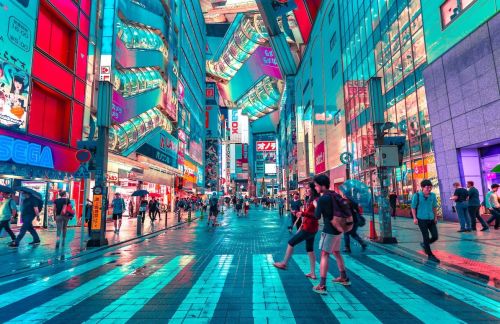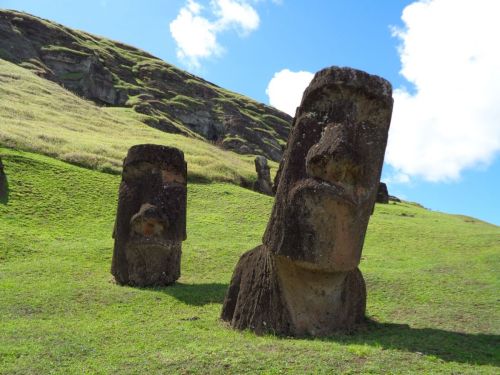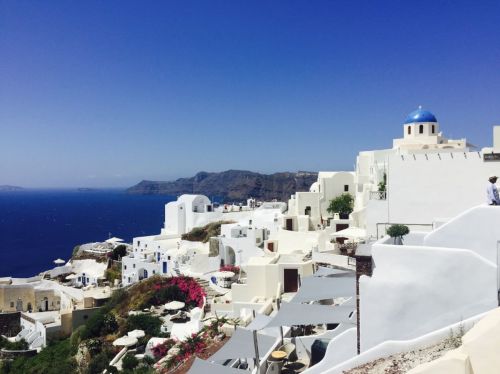This picturesque archipelago located in the middle of the Pacific Ocean owes its creation entirely to volcanic eruptions. Lush deciduous forests interspersed with numerous palm trees have grown on the nutrient-rich volcanic soil. The islands are inhabited by large numbers of birds and around them there are huge coral reefs with thousands of species of fish, corals, and marine invertebrates. The islands began to form about 30 million years ago, and at that time, plants and animals that were unique in the world developed on their surface. The first people arrived here only a thousand years ago, unfortunately irrevocably killing a significant part of nature, which was lost forever.
It consists of 137 islands stretching for 2400 km.
It is the only state that is located entirely on islands and the only one located in the intertropical zone. However, not all the islands in the archipelago are part of the state of Hawaii - Midway Island is an unincorporated territory, which means that it is a territory dependent on the United States, but the entire United States constitution does not apply there.
There are 8 main, largest islands, the largest of which is Hawaiʻi (Big Island), which covers an area of 10.432,5 square kilometers.
The exact date is unknown, but archaeological research indicates that the first settlers reached the islands between 940 and 1130. The islands were colonized by Polynesians, who remained cut off from the outside world for over 500 years after settling in Hawaii.
The Spanish claim that this was done by the captain of their fleet, Ruy López de Villalobos, in 1542. The island was named "Isla de Mesa, de los Monjes y Desgraciada". What is certain, however, is that the British explorer James Cook arrived in Hawaii in 1778. The British brought weapons with them to the islands, which contributed to the creation of the Kingdom of Hawaii.
Using firearms unknown in this part of the world, he conquered and united small island states and created the Kingdom of Hawaii in 1795, of which he became the first king.
The newcomers brought with them various diseases that decimated the native population. Around 1770, the population of Hawaii was 300.000 people, in 1850 it dropped to 60.000, and in 1920 it was only 24.000. Smallpox took the greatest toll on the islanders.
It was based on polydivinity and animism. All kinds of deities, spirits, and powers of nature were present in it. The pantheon of the most important deities consisted of as many as 44 mystical entities, the most important of which were:
Until the early Middle Ages, the islands were completely virgin, but with the arrival of the first settlers, foreign species were introduced to these areas. These were not only crops and trees but also farm animals such as pigs and even pests - rats, which have become perfectly at home on the islands, destroying their original fauna and flora. It is not known exactly how many endemic species became extinct before Europeans arrived on the islands, but their arrival only accelerated the process. With the advent of modern agricultural technologies, more and more forest areas were cleared, monoculture crops were introduced and more and more foreign fauna and flora were introduced. Of the endemics that have survived to this day, most are at risk of extinction.
Northeastern areas are fed by trade winds, which provide moist air. In turn, the southwestern coasts are drier areas. However, the temperatures here are high and quite stable all year round. The average temperature in summer is 29 degrees Celsius and in winter 26 degrees Celsius.
Its height is 4207,3 m above sea level, and is located on the largest island of the archipelago - Hawaiʻi. The last eruption took place 6000 to 4000 years ago. It is one of five volcanoes that contributed to the formation of the island.
There are 13 telescopes installed on the volcano for observations in various ranges of electromagnetic waves: visible, infrared, radio, and sub-millimeter (deep infrared). This place was chosen because it is one of the few locations on Earth with excellent conditions for observing space. Because Hawaii is located in the middle of the ocean, the sky is very dark, constant temperatures guarantee low air turbulence, and the high location ensures the absence of clouds that are lower than the telescopes.
They are home to over 7000 species of animals and plants, of which over 1250 are unique on a global scale (endemic). The largest concentration of reefs is located north-west of the archipelago, it was discovered in 1820 by Captain Joseph Allen.
Tremors are almost a daily occurrence here. Typically, a small earthquake occurs in Hawaii every 3.5 days. The detailed analysis of the Richter scale is as follows:
Earthquakes below magnitude 5.5 are felt but cause little damage. From 5.5 to 6.1 are medium tremors, and below 7 are large tremors causing serious damage. Above 7, these are very serious tremors, and above 7.4 they are catastrophic, felt from huge distances, and can cause unimaginable damage.
Over 75 percent of people here speak English, 21 percent speak Asian languages, and the third most popular language is Spanish, which is spoken by only 2.6 percent of citizens.
The city is located on the island of Oʻahu and is inhabited by approximately 345.000 people. Honolulu has numerous museums, concert halls, an oceanarium, and a zoo. It is also a large educational center, with as many as 8 universities and 2 colleges. There is also an airport in Honolulu - Daniel K. Inouye International Airport.












